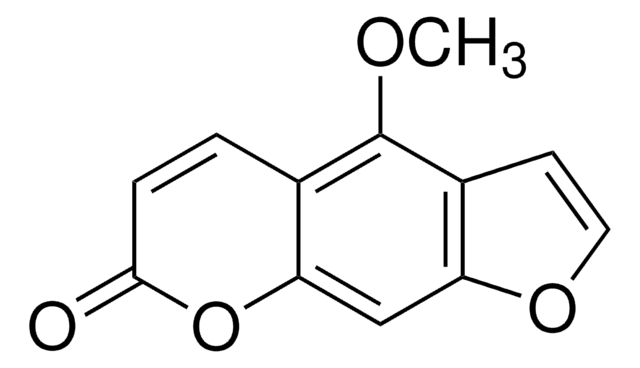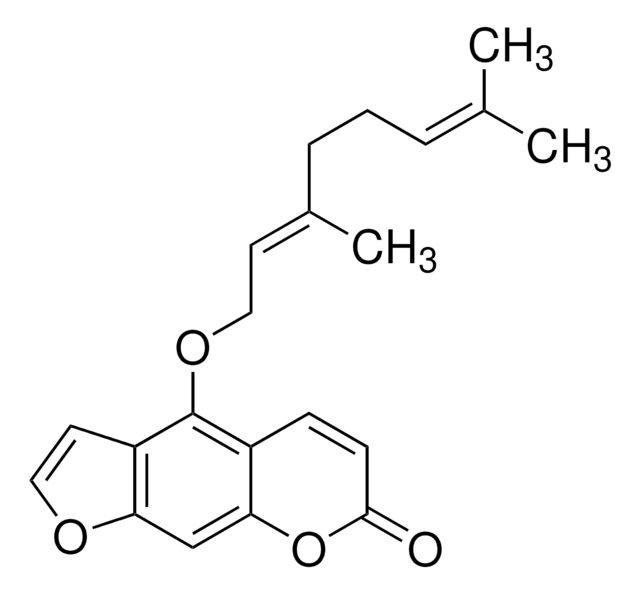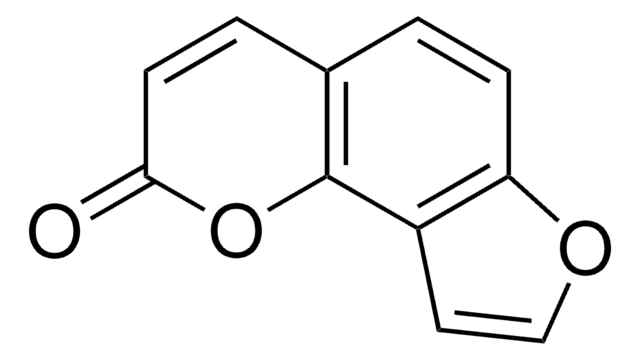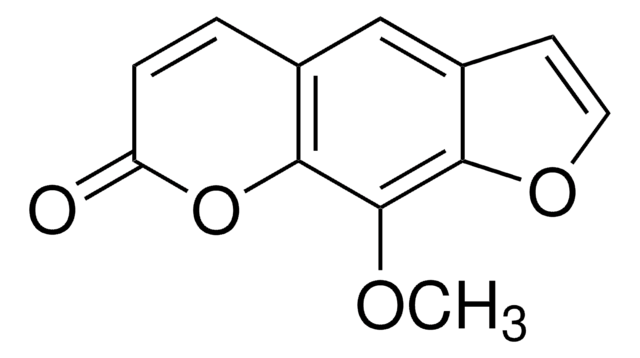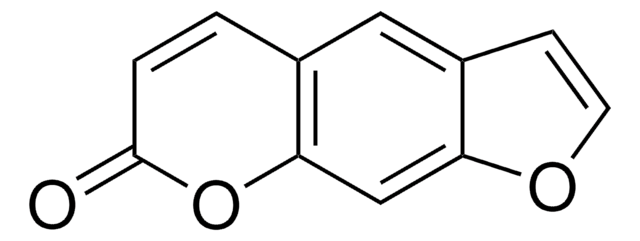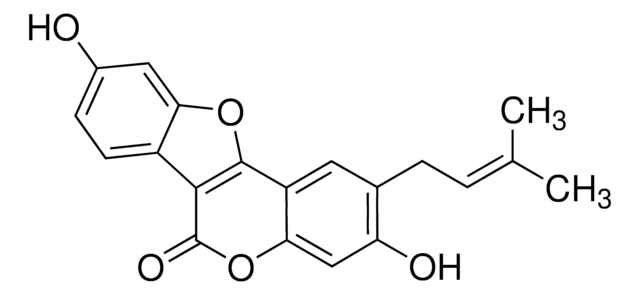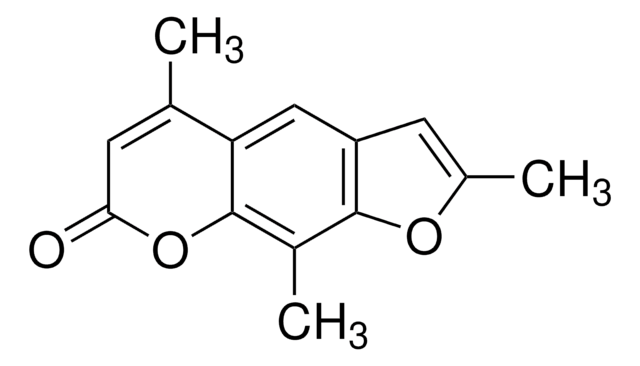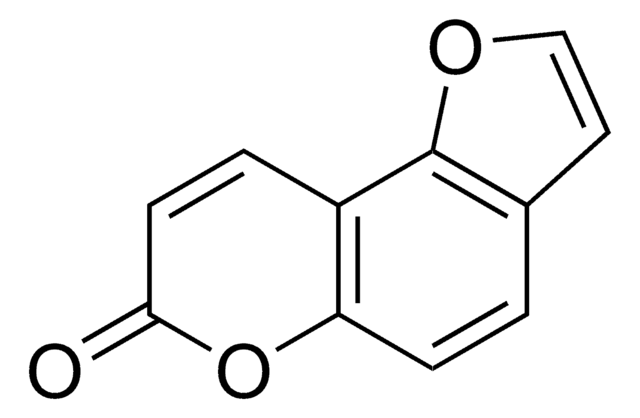P8399
Psoralen
≥99% (HPLC)
Sinónimos:
6,7-Furanocoumarin, 7H-Furo[3,2-g]benzopyran-7-one, Ficusin, Furo[3,2-g]coumarin
About This Item
Productos recomendados
Quality Level
assay
≥99% (HPLC)
form
powder
fluorescence
λex 335 nm; λem 460 nm (pH 7.0)
storage temp.
2-8°C
SMILES string
O=C1Oc2cc3occc3cc2C=C1
InChI
1S/C11H6O3/c12-11-2-1-7-5-8-3-4-13-9(8)6-10(7)14-11/h1-6H
InChI key
ZCCUUQDIBDJBTK-UHFFFAOYSA-N
¿Está buscando productos similares? Visita Guía de comparación de productos
Application
- as a crosslinker for dsRNA for in- situ hybridization studies
- in testing melanin dispersal effects in fish scale melanophores
- to test its stimulatory effects in osteoblast a cell proliferation assay
- as a reference standard in high-performance liquid chromatography (HPLC)
Biochem/physiol Actions
Features and Benefits
signalword
Warning
hcodes
Hazard Classifications
Acute Tox. 4 Oral - Skin Sens. 1
Storage Class
11 - Combustible Solids
wgk_germany
WGK 3
flash_point_f
Not applicable
flash_point_c
Not applicable
ppe
dust mask type N95 (US), Eyeshields, Gloves
Elija entre una de las versiones más recientes:
¿Ya tiene este producto?
Encuentre la documentación para los productos que ha comprado recientemente en la Biblioteca de documentos.
Los clientes también vieron
Artículos
DNA damage and repair mechanism is vital for maintaining DNA integrity. Damage to cellular DNA is involved in mutagenesis, the development of cancer among others.
Contenido relacionado
Apoptosis, or programmed cell death (PCD), is a selective process for the removal of unnecessary, infected or transformed cells in various biological systems. As it plays a role in the homeostasis of multicellular organisms, apoptosis is tightly regulated through two principal pathways by a number of regulatory and effector molecules.
n proliferating cells, the cell cycle consists of four phases. Gap 1 (G1) is the interval between mitosis and DNA replication that is characterized by cell growth. Replication of DNA occurs during the synthesis (S) phase, which is followed by a second gap phase (G2) during which growth and preparation for cell division occurs. Together, these three stages comprise the interphase phase of the cell cycle. Interphase is followed by the mitotic (M) phase.
Nuestro equipo de científicos tiene experiencia en todas las áreas de investigación: Ciencias de la vida, Ciencia de los materiales, Síntesis química, Cromatografía, Analítica y muchas otras.
Póngase en contacto con el Servicio técnico
